SOMME - FRENCH Sector - Flaucourt - Biaches
duda-wsm • 28 March 2019
Year of visit: 2007

A visit to the relics of the former German War Cemetery at the Plateau de Flaucourt and to French National Military Cemetery of Biaches.
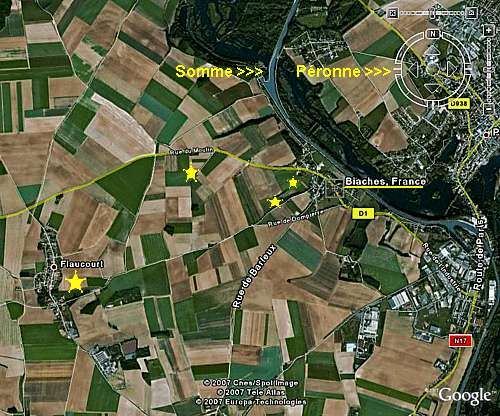
The Plateau de Flaucourt around the village formed the German second defense line. During the war years there used to be a German war cemetery, just outside the village, east. Nowadays, hardly visible (!), on a plateau above the sunken country road, stands this brick memorial, the only relic of the cemetery in the German second line.
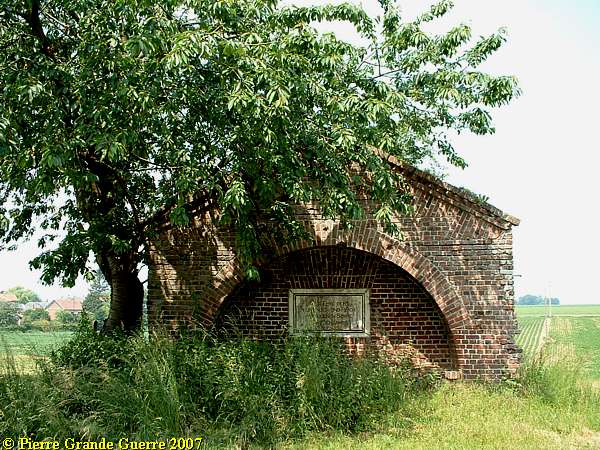
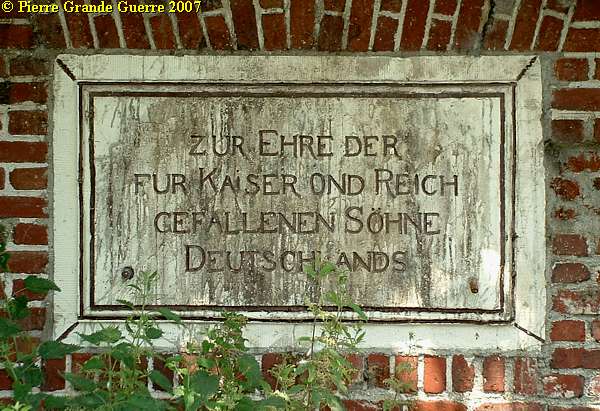
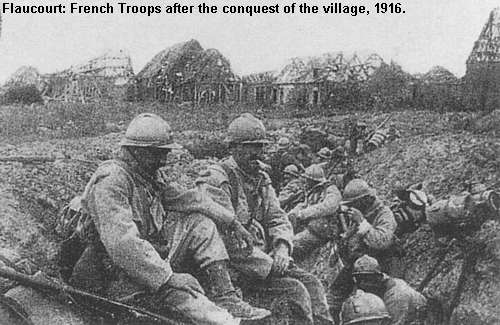
Fayolle's 23rd Infantry Regiment of the VIth Army, and the 1st Colonial Corps captured the Plateau at 3 July, and forced a breach in the German front.
A view from the Plateau de Flaucourt north-eastward.
A view from the Plateau de Flaucourt north-eastward.
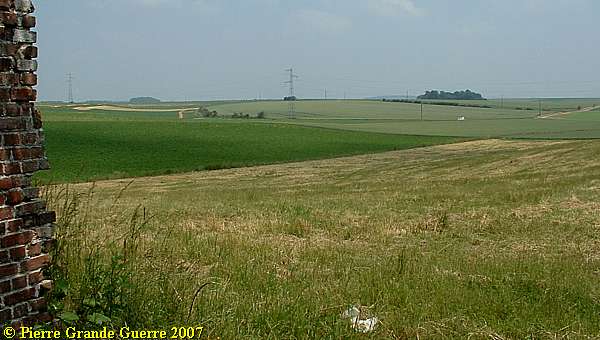
We continue and follow the southern, narrow sunken road from Flaucourt to Biaches.
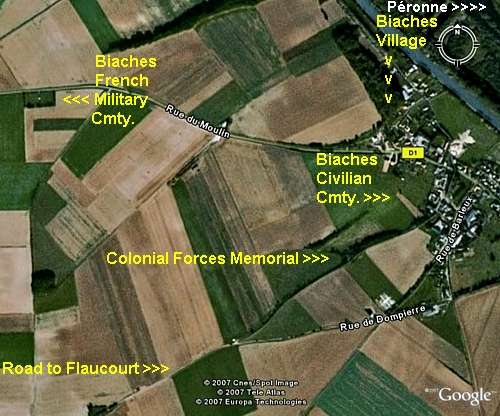
On the left, northern side of the road we climbed to this monument, commemorating the heroic activities of
the 1st Colonial Corps in this sector, and its soldiers who died here.
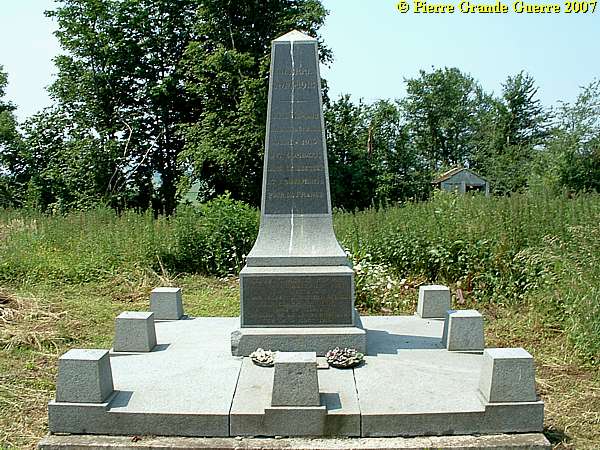
Right behind it stands the monument of a crucifix, marking the grave of 2nd Lt. Marcel Brocheriou, of the 22nd Infantry Regiment, honoured with the Croix de Guerre and awarded the honour of Chevalier d' Honneur, who was killed on 6 August 1916 near this spot.
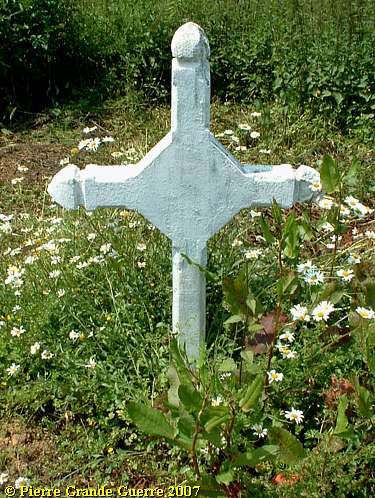
A view from the Memorial north-west.

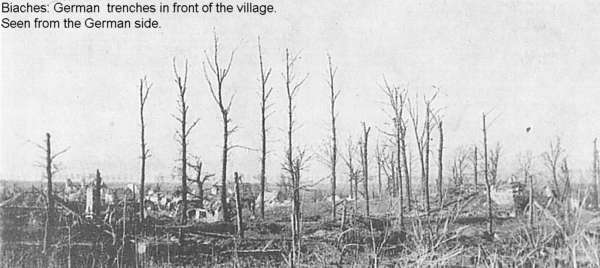
The Germans occupied Biaches already on 28 August 1914!
Biaches was captured on 10 July 1916 by units of the 72nd Infantry Division, withunits of the Légion Etrangère (Foreign Legion), and the 1st Colonial Corps as auxiliaries.
View from the memorial north-eastward.
View from the memorial north-eastward.
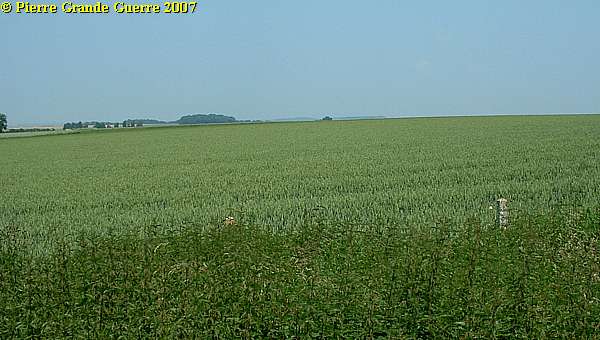
On the outskirts of the village of Biaches, we visit some mass grave memorials on the civilian cemetery, reminding us of the battles of August and September 1914 at nearby Assevillers and La Maisonette.
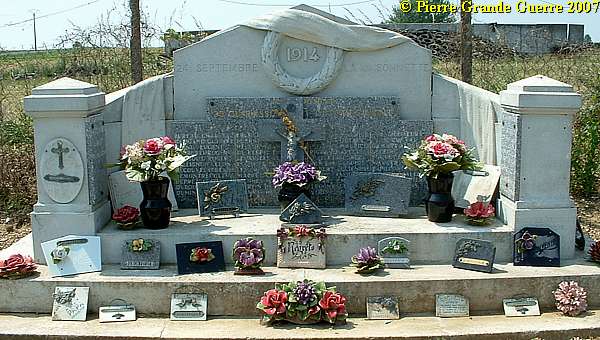
This collective grave contains 12 bodies of soldiers of the 7th Battalion "Chasseurs Alpins" (special mountain troops), fallen here in nearby La Maisonette, south of Biaches on 28 August 1914.

Through the village we continue northward, and go left, westward over the northern D1, to visit the French National Military Cemetery of Biaches.
Panorama view from the edge of the cemetery southward over the Plateau de Flaucourt.
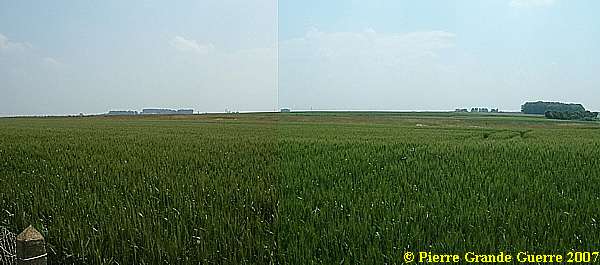
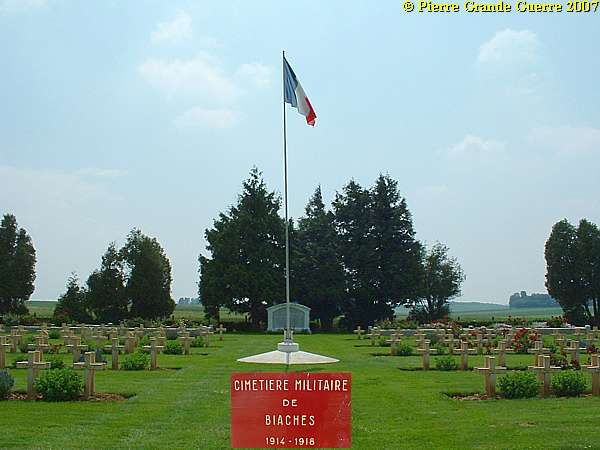
The French Military Cemetery of Biaches contains 1.362 graves.
After 10 July 1916 Biaches was counterattacked by the Germans several times. The Germans even occupied the village again for 2 days from 15 to 17 July. But on 19 July the Germans lost the village and it's grounds around.

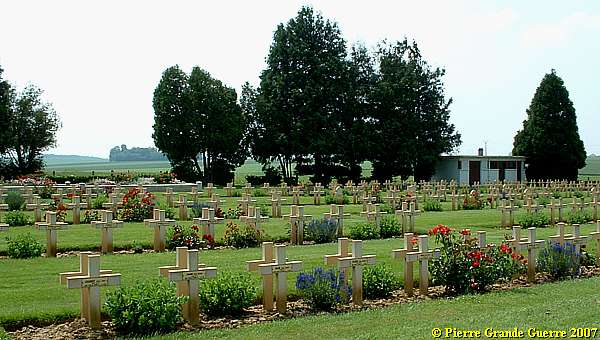
Two Ossuaries:
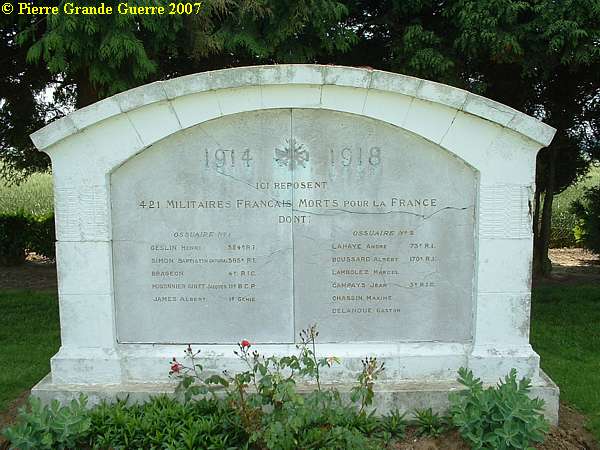
Battalions of the Royal Warwickshire Regiment took over this sector from the French in January 1917.
From January until March 1917, there were still heavy fights for the village, so close to the Somme, the German stronghold of Péronne, and of Mont St. Quentin, until the Germans withdrawed on the Hindenburg Line.
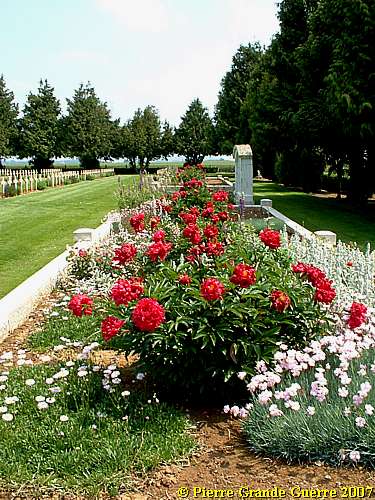
View north-eastward over the cemetery.
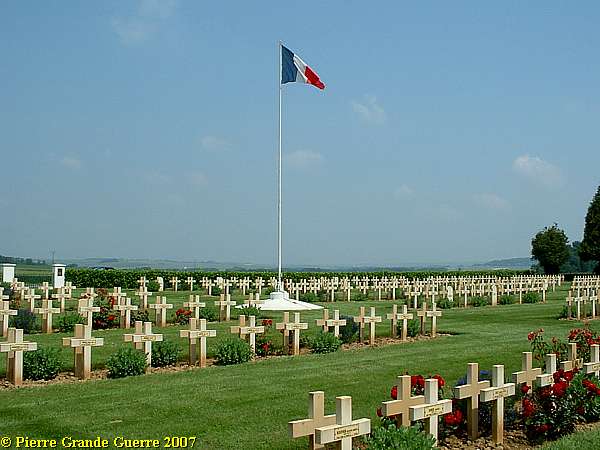
View from the other side of the D1 north-eastward, "more to the right", over the former battlefield.
On the horizon the Mont St. Quentin, on the other bank of the Somme, battlefield of the Australian 2nd Division against
the Prussian Guard from 31 August until 2 September 1918.
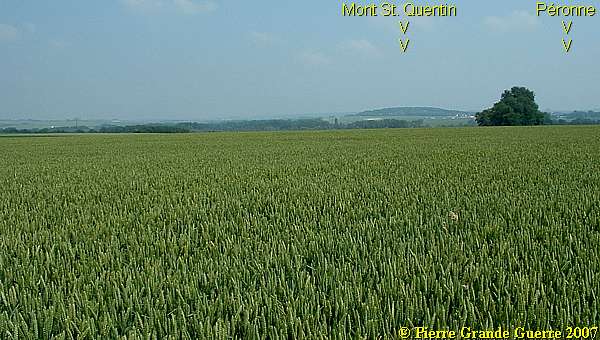
Continue
to the next chapter: " The Battlefields of VERDUN - Verdun Citadel
"

Inleiding: Franz Von Papen & Werner Horn; schaker en pion Onlangs stuitte ik in een oud boek (1) van 1919 op een opmerkelijk verhaal over een Duitse Luitenant, die in begin februari 1915 een half geslaagde bomaanslag pleegt op een spoorbrug over een grensrivier tussen de Verenigde Staten en Canada. Ook al staat de bekentenis van de dader, Werner Horn, deels in het boek te lezen, de naam van zijn opdrachtgever zal Horn blijven verzwijgen. Na wat verder zoeken vond ik ook de naam van Horn’s opdrachtgever, Franz von Papen, een van de aangeklaagden van het latere Neurenberg Proces in 1946. In een Grote Oorlog als de Eerste Wereldoorlog is Horn’s aanslag op de brug uiteraard slechts een bescheiden wapenfeit. Toch vermoed ik dat dit relatief onbekende verhaal, dat de geschiedenis is ingegaan als de “ Vanceboro International Bridge Bombing ”, nog interessante kanten kent. Het is onder andere een spionageverhaal over hoe in een groter plan een sluwe schaker zijn naïeve pion offert. Beknopte situatieschets Canada en de Verenigde Staten in 1915

This trip we start at the Léomont near Vitrimont and we will with some exceptions concentrate on the Battle of Lorraine of August-September 1914 in the area, called, the “Trouée de Charmes”, the Gap of Charmes. After the Léomont battlefield we continue our explorations to Friscati hill and its Nécropole Nationale. Next we pay a visit to the battlefield of la Tombe to go on to the Château de Lunéville. There we cross the Vezouze to move on southward to the Bayon Nécropole Nationale. At Bayon we cross the Moselle to pass Charmes for the panorama over the battlefield from the Haut du Mont. North-west of Charmes we will visit the British Military Cemetery containing 1918 war victims. From Charmes we go northward to the battlefield of the First French Victory of the Great War, the Battle of Rozelieures of 25 August 1914. North of Rozelieures we will visit the village of Gerbéviller. From there we make a jump northward to visit the ruins of Fort de Manonviller to finish with an interesting French Dressing Station bunker, west of Domjevin.

Though we depart from Badonviller in the Northern Vosges , we make a jump northward to the east of Lunéville and Manonviller . We start at Avricourt on the border of Alsace and Lorraine. From the Avricourt Deutscher Soldatenfriedhof we explore the southern Lorraine battlefields ; the mine craters of Leintrey , the Franco- German war cemetery and Côte 303 at Reillon , and some German bunkers near Gondrexon , Montreux , and Parux .

North-east of Nancy, east of Pont-à-Mousson, and south-east of Metz we visit the battlefields of the Battle of Morhange of 14 until 20 August 1914. We follow mainly topographically the route of the French advance eastward over the Franco-German border of 1871-1918. During this visit, we try to focus on the day that the momentum of the battle switched from the French side to the advantage of the Bavarian side: the day of 20 August 1914, when the Bavarians rapidly re-conquered the territory around Morhange , being also the day of the start of their rather successful “Schlacht in Lothringen”. We will visit beautiful landscapes of the "Parc Naturel Régional de Lorraine", memorials, ossuaries, and cemeteries. Sometimes we will divert to other periods of the Great War, honouring Russian and Romanian soldiers, who died in this sector. We start our route at the border village of Manhoué, and via Frémery, Oron, Chicourt, Morhange, Riche, Conthil, Lidrezing, Dieuze, Vergaville, Bidestroff, Cutting, Bisping we will finish in Nomeny and Mailly-sur-Seille, where the Germans halted their advance on 20 August 1914, and where they constructed from 1915 some interesting bunkers.

South of Manhoué we start this trip at Lanfroicourt along the French side of the Franco-German 1871-1918 border, marked by the meandering Seille river. We visit some French bunkers in Lanfroicourt, near Array-et-Han and in Moivrons. From there we go northward to the outskirts of Nomeny and the hamlet of Brionne to visit the ( second ) memorial, commemorating the events in Nomeny of 20 August 1914. We continue westward to finish at the Monument du Grand Couronné at the Côte de Géneviève, a former French artillery base, which offers several panoramic views over the battlefield.

North of Pont-à-Mousson and south of Metz, we explore the relics of German bunkers and fortifications along the Franco-German 1871-1918 border. We start at Bouxières-sous-Froidmont to visit the nearby height of the Froidmont on the front line. This time we will show only a part of the Froidmont, focusing on its military significance. From the Froidmont we continue via Longeville-lès-Cheminot and Sillegny to the “Forêt Domaniale de Sillegny” to explore some artillery ammunition bunkers. Next we continue to Marieulles for its three interesting bunkers and to Vezon for its line of ammunition depot bunkers. From Vezon we continue to the “Deutscher Kriegsgräberstätte Fey – Buch”. From Fey we go eastward, passing 6 bunkers near Coin-lès-Cuvry to finish our trip at the top construction of the “Feste Wagner” or “Fort Verny”, north of Verny.

We concentrate on the German side of the front around "Markirch", Sainte Marie-aux-Mines, the so-called "Leber" front sector . We first pay a visit to the Sainte-Marie-aux-Mines Deutscher Soldatenfriedhof, and next to the southern side of the Col de Ste. Marie for the many interesting bunkers of the German positions at the Bernhardstein, at the north-eastern slopes of the Tête du Violu. On the next photo page about the Haut de Faîte we will continue with a visit to the northern side of the pass and the "Leber" sector.



